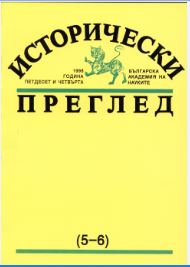Локализиране на Латинския квартал в Пловдив през средновековието
The Localization of the Latin Quarter in Plovdiv during the Middle Ages
Author(s): Annie Dancheva-VasilevaSubject(s): History, Ethnohistory, Local History / Microhistory, Middle Ages, 6th to 12th Centuries, 13th to 14th Centuries, 15th Century
Published by: Институт за исторически изследвания - Българска академия на науките
Keywords: Chronicle of Odonis de Deogilo; Second Crusade 1147–1149; Stefan Gerlach; Armenian shrine “Surp Kevork”
Summary/Abstract: The population of the central Thracian town of Plovdiv was distinguished by its variegated ethnic composition during the Middle Ages. In the late 11th c. in the town took shape a Latin quarter, specifically mentioned in the Chronicle of Odonis de Deogilo in connection with the passing of the knights of the Second Crusade (1147–1149). It was outside the wall of the stronghold and was perhaps fortified. During the campaign in a church dedicated to St. George and also situated outside the citadel was buried the Atribatic Bishop. In the travel notes of the German traveller Stefan Gerlach, who passed through Plovdiv in 1578, is discovered information about eight churches functioning at that time in Plovdiv and their patrons are mentioned accurately. Six of them are used as places of worship now as well. It is most probable that these churches existed also during the Middle Ages, bearing in mind the stable tradition in inheriting the places of the shrines and their patrons saints. One of these churches that are mentioned is “St. George”. At the very foot of the Three Hills in a northwestern direction is located the now functioning Armenian shrine “Surp Kevork” (“St. George”). There is a table here with an inscription which indicates that the church was handed over to the Armenian community in Plovdiv in 1675 and was renovated in 1828. The information and the comparisons allow with great certainty to express the view that on the spot of the modern church “Surp Kevork” stood the mediaeval church “St. George” which received the mortal remains of the Western Catholic bishop. The canonical closeness between the Roman Church and the Armenian, headed by a Catholicos, supports the view that the church originally was used by worshipers of Western descent and then by the Armenian population in the town. On the basis of the comparisons made with certainty cab be localized the Latin quarter in Plovdiv at the foot of the acropolis in the areas around the modern Armenian church “Surp Kevork”.
Journal: Исторически преглед
- Issue Year: 1998
- Issue No: 5-6
- Page Range: 163-170
- Page Count: 8
- Language: Bulgarian
- Content File-PDF

